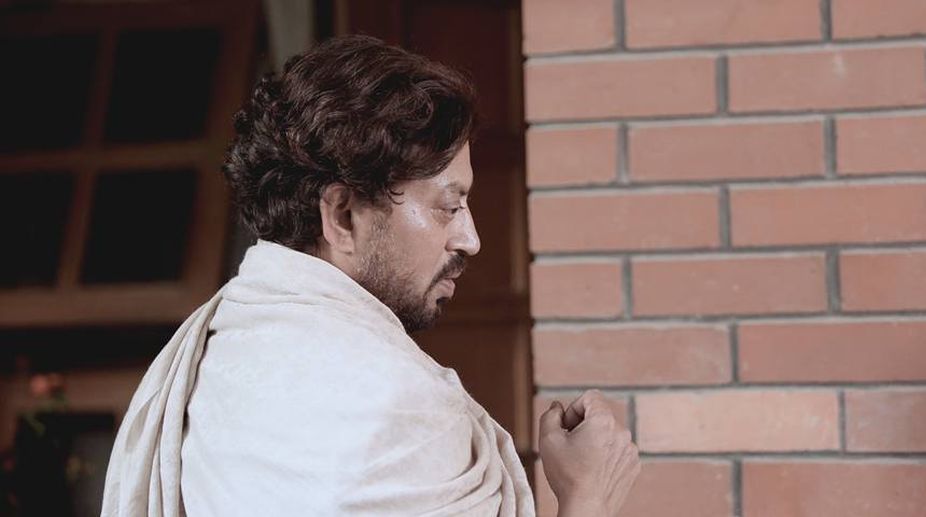Who is Mostofa Sarwar Farooki, filmmaker turned Bangladesh’s new cultural affairs adviser?
Renowned filmmaker Mostofa Sarwar Farooki takes on a new role as Adviser to Bangladesh's Cultural Affairs Ministry, blending art with governance.

A still from the film 'Doob' (Photo Credits: Facebook)
This is just the film that would appropriately usher in the next edition of the Kolkata International Film Festival. After having travelled to several festivals, Doob: No Bed of Roses arrives in Kolkata to tickle the nerves of an essentially perceptive viewership, which can participate in a celebration of images.
The IndoBangladesh venture with a director from across the border confirms how far the cinema in Bangladesh has moved from stirring reflections of patriotic fervour, on one hand, and mindless copies of Bollywood entertainment, on the other, to an excitingly fresh vocabulary.
Advertisement
Some examples of the new Bangladesh cinema have arrived in Kolkata for a limited number of viewers. This is the first time that a film shot on different locations in Bangladesh with an unmistakable European flavour has found space in commercial theatres.
Advertisement
This is partly due to the strong Indian connection in the form of Irrfan Khan in the central role. It required a herculean effort on the part of the actor to grasp the nuances of the local diction that is preserved in this sombre tale of separation and longing.
A film director with an exceptional past when he had eloped with the girl he had later married strays into an equally exceptional relationship with a friend of his grownup daughter to make this film, when it begins, a challenging investigation of four progressive minds.
This is where it extends the cinematic treatment to a cerebral experience in a universal context of changing urban values. The extra-marital developments do not throw up too many new revelations. What makes the difference is the restrained tone and the lingering images of sadness that mark the internal conflicts.
The opening shot of the two young friends at a school reunion after they have been distanced by the man’s weaknesses is a striking result of a conscious visual experience where the placement of props and people, expressions, silent passages and immaculately controlled movements add up to an artistic narrative that is quite extraordinary.
It is not just that the filmmaker, Mostofa Sarwar Farooki, rejects even the slightest hints of melodrama that could have been injected to meet the expectations of a theatrical audience. It is a human experience that is placed in a universal context and spared the attempts at moral judgments.
The director’s contribution lies primarily in exploring the depths of an emotional dilemma where the experience of love can be conveyed with subtleties and shades that none of the characters can deny. In doing so, he finds his métier in a stunning flow of crafted images.
It may be difficult to reconcile the style to the reality of human expressions and the emotional roots that one is familiar with. But one must accept the artistic licence in order to swim in the artistic tide that sweeps the film.
In both style and statement, the film breaks conventional barriers in the hope of reaching out to a global audience. The muted complexity of the characters may be a little too much to digest in dramatic terms.
But as one follows the pattern of overlapping images, one is drawn into the insightful sub-text on the significance of life and death. It is the director making the visual and philosophical statements with multi-layered characters becoming his most effective means of communication.
The director holds the key allowing each of the main characters — the film director, the woman he divorces to marry the young actress who forces her way into his life and his daughter — to respond in a particular way to the stark reality of betrayal.
The observation of each of these characters keeps interest alive even as the film moves at an unusually languid pace through long stretches of seeming nothingness. It is through the protagonist in the agonising moments of both life and death that the director hints at the enduring facets of love becoming the antidote to the harsh realities of infidelity and separation.
Only an actor of Irrfan Khan’s class and conviction could have handled a role that is so challenging. He needed to get into the skin of the character through every little moment whether in introspection or in his exchanges with his wife and daughter.
Both women have done brilliantly to bring their respective tensions and tragedies to the screen — in particular Nusrat Imrose Tisha as the daughter who sustains a tender overlapping of pain and attachment.
Parno Mitra suffers by comparison but fits into the overall design with an appropriate contribution of subdued despair. But finally the film rests squarely on Irrfan Khan as the script traces the emotional journey with a sensitive intermingling of lingering shots and intermittent voices.
Understandably, he has an overdose of English dialogue even in the little that he speaks. But that does not interfere with the essential tone that is managed with intense care and immaculate craftsmanship. All this may take the film to different festivals to give the world a taste of the New Cinema in Bangladesh.
The collaboration with India generates more hope in a larger context. It is not clear whether artistic indulgence in support of an intellectual statement can survive on a more lasting basis. But a discerning class should be touched by the visual experience that is strikingly different and seldom seen in India.
Advertisement